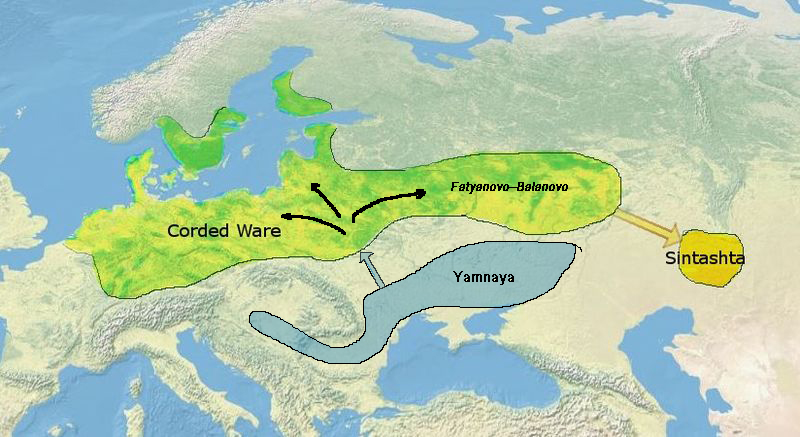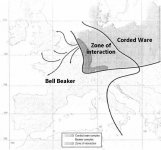Athiudisc
Banned
- Messages
- 212
- Reaction score
- 49
- Points
- 0
- Ethnic group
- North Sea Islander
- Y-DNA haplogroup
- R1b-L45
- mtDNA haplogroup
- K2b1a
berun said:why IE being in the steppes had words for:
squirrel
boar
red deer
salmon/trout
bear
All of these live across the steppe, don't they? Wouldn't this be evidence for, rather than against, a steppe origin of IE?
berun said:R1b...recorded in Italy just some 2000 years after the R1b formation... and without any steppe track
I think R1b is a bit older, but assuming we're talking about the same sample and a "steppe track," there's some debate about that. Quoting, here:
Davidski said:I've been running a lot of Treemix analyses with the samples from the recent Qiaomei Fu et al. paper. And the impression I'm getting is that the authors missed the elephant in the room, the one with R1b painted on its big butt.
...
- Villabruna is a sister clade of the earlier European Vestonice clade, but with significant input from an AfontovaGora3-related North Eurasian population, perhaps one that was living north of the Black Sea after the Kostenki people went the way of the dodo
- Hence, the R1b lineage carried by Villabruna I9030, the individual in this Treemix series, probably comes from the Eurasian steppe
What sample are we talking about?
berun said:Both Sintashta and Andronovo have provided R1a Y-DNA results, and no R1b yet.
But both Yamna and Corded Ware have provided R1b, so...



